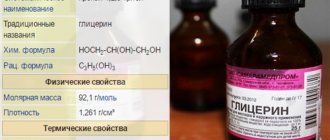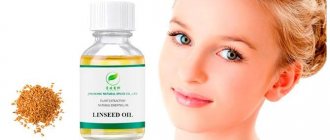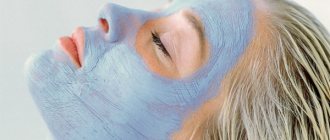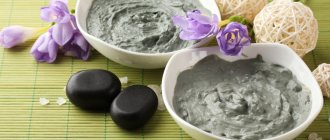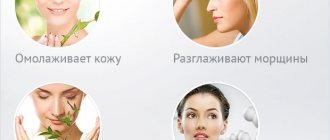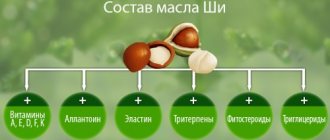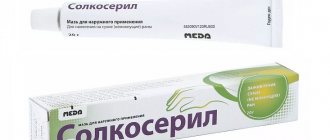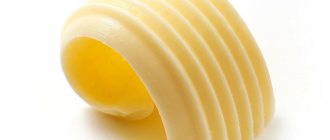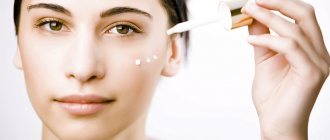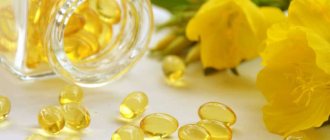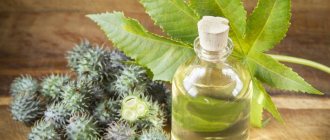Cosmetic clay as a cosmetic product has been known to the world for quite a long time. It is known to have antibacterial, anti-inflammatory and detox properties. In this article we will tell you about cosmetic clay: how to use, basic properties, composition, and so on.
On the shelves of ordinary stores it is very easy to find cosmetic clay of any color, either as a mono product or as one of the components in cosmetics. Depending on the color of the clay, its properties differ, but we will talk about this below.
Compound
Green clay is nature’s most valuable gift to man.
Its deposits are located at great depths. The high-quality product is mined on the northern coast of Brittany in France - the most environmentally friendly area in Europe. For cosmetic purposes, clay removed from the formation at a depth of 10-15 meters is used. The time of formation of the deposits dates back to the post-glacial period; this factor ensures the purity of the substance from harmful impurities resulting from human pollution of the environment. Compared to other varieties, green clay contains the largest amount of substances necessary for the human body:
- magnesium;
- calcium;
- silver;
- manganese;
- phosphorus;
- iron and aluminum oxides;
- zinc;
- copper;
- cobalt;
- silicon;
- molybdenum.
Being on the seabed, the green clay was enriched over many centuries with the most valuable minerals contained in the water. To obtain a powdered cosmetic product, it undergoes long-term delicate cleaning and drying in the sun.
What's happened
Green clay is small pieces of rock. Formed under the influence of natural phenomena. Known for a long time. The green sedimentary mass is also called French, illite. First opened in Brittany (France). It is mined from a depth of up to 15 m. Silver and iron oxide give a unique color. In cosmetology it is used for hair and face.
The traditional form of release is powder. They are bred, making it plastic. Masks are made from mountain deposits. To fight cellulite, they do body wraps. Taken orally. The spicy scent of green clay is used in aromatherapy.
Properties
Cosmetic green clay has a beneficial effect on dry skin: moisturizes and tones dry skin, oily skin gets rid of shine, aging skin is nourished with minerals, which leads to the reduction of wrinkles.
The high silver content helps normalize local metabolic processes, inhibits cell aging, and strengthens the epithelium. Magnesium perfectly relieves inflammation, potassium regulates water exchange, calcium has a calming effect. Application of clay activates blood flow on the surface of the skin, which improves its nutrition, stimulates regeneration, increases elasticity and firmness, and relieves swelling. The substance has antibacterial, antiallergic and adsorbing properties, is able to draw out and absorb toxins from the body, which is important in the treatment of various inflammatory processes.
Green clay normalizes the production of sebum, eliminates blackheads, whitens, and exfoliates the surface layer of the epithelium.
Cosmetic clay - types
The colors of clay are created by the presence of mineral elements. Hence the usefulness of certain shades. Let's look at what kind of clay there is.
Blue
Microelements - calcium, aluminum, sodium, zinc, manganese, iron, silicon. Has a grayish tint. Bright blue indicates artificial enrichment with substances.
Pink
There is no such thing as natural. It is obtained by proportionally combining red and white clay. Includes - Mg, Fe, Ca, Cu, Si, Zn, silica. Should be practiced if you have increased sensitivity. Restores, moisturizes, softens.
Yellow
The yellow color is formed by iron and potassium. Used for rejuvenation. Saturates tissues with oxygen and moisture. Suitable for excess fat content. Exfoliating effect.
White
Recognized in facial cosmetics. Contains zinc, aluminum, silica, silicon, manganese, calcium. Used for problem skin, detox functions, turgor, tone. Whitens, smooths out age spots, scars. Used for cellulite and stretch marks.
Red
Country of origin: Morocco. Extracted from a volcano. Ingredients: ferrum, magnesium, copper, silicium (Si). The color range ranges from grayish to purple. Effective for problematic dermis. Anti-aging. The result is toning, lifting, regeneration. Complements shampoo - combats dry, dull hair, dandruff. Increases blood flow in case of cellulite.
Black
Made from volcanic rock. Ingredients: Quartz, Fe, Carbon, Magnesium, Ca. Clears away toxins. Nourishes hair. Helps tighten while losing weight.
Gray
The characteristics are similar to black. Perfect for dry skin types. Protects from harmful environment. Cosmetologists suggest adding it to baths for hands and feet. Antimicrobial protection, cleansing.
Green
The green clay discussed in this review is the most effective of those listed above. Rarely found in nature. Base - silver, copper, Fe, potassium, zinc, Si, Al. Gently cleanses and exfoliates. Complex effect on the epidermis. Let's study it in more detail below.
Operating principle
The cosmetic product is used in the form of masks - this is how it works most effectively. For better absorption of nutrients by the body, a number of rules should be followed:
- the skin must first be thoroughly cleaned of cosmetics and surface contaminants;
- the ingredients for preparing the mask should be at room temperature;
- it is permissible to apply only freshly prepared composition;
- after removing the composition from the face, the skin must be moisturized with cream;
- the preparation should not be allowed to dry completely to avoid overdrying and microcracks;
- the course of treatment is 1 month, the frequency of applications is 1-2 times every 10 days.
After regularly using masks for a month, you need to take a break for the same amount of time.
Use for hair
Green clay is successfully used to care for hair. Especially beneficial for those who are salty. Curly hair becomes soft and fits well.
Here are two recognized recipes as a warm-up.
Mask with milk.
1 tablespoon each. clay powder, milk, sea buckthorn. Mix thoroughly. Pour in the beaten chicken yolk. We coat the curls. Wrap your head in cellophane, with a towel or scarf on top. Keep it on for 20 minutes. We thoroughly wash our hair.
With apple cider vinegar
2 tbsp. spoons of clay, water is identical, plus 1 vinegar. The mixed substance is rubbed into the surface of the head - we eliminate the greasiness. Session time 20 min. Rinse thoroughly.
Indications
Green clay is my favorite skincare product. It helps to correct many shortcomings using the powers of the earth contained in it. The composition is completely non-aggressive towards the skin, acts softly and delicately.
I recommend green clay to my clients if they have:
- increased secretion of the sebaceous glands;
- acne;
- bumps and spots after acne;
- keratosis;
- enlarged pores;
- comedones;
- The first signs of aging are decreased tone and fine wrinkles.
Before starting the procedures, it doesn’t hurt to consult a dermatologist - expert advice will help you avoid possible problems.
Mask recipes
Green clay face masks are varied in composition, which varies depending on the purpose. Before starting the procedure, be sure to test for an allergic reaction. The substance is hypoallergenic, but the factor of individual intolerance cannot be excluded.
To prepare the composition, any utensils are suitable, except metal, preferably enameled, glass, ceramic. It is convenient to apply it with a wide, stiff brush, although you can also use your fingers.
How long should you keep the mask on your face? I recommend adjusting the time according to your skin type: dry – 5 minutes, normal – 10-15 minutes, oily – 20-30 minutes.
| Mask | Recipe | Note |
| For pimples and acne Treatment masks made from green clay, when used regularly, eliminate acne and pimples in a short time, the effect lasts for a long time. The pustules dry out, become covered with a thin crust, decrease in volume and disappear, leaving no traces. | ||
| Classic recipe | Mix 1 tbsp. green clay with water until the consistency of sour cream. Apply the mixture to your face, rinse off after the required time, and moisturize your skin with cream. | |
| With rosemary |
| The mask dries out pustules and removes acne spots. |
| With grapes |
| I recommend removing the product with a warm herbal decoction - from chamomile or string. |
| With honey |
| When mixing the ingredients, add water last and use it to adjust the thickness of the composition. |
| With salt | Mix 1 tbsp. clay and salt, dilute with water. The mask is ready. | |
| With bodyaga |
| It is not necessary to cover the entire face with the composition; you can limit yourself to only problem areas. |
| For oily skin Green clay effectively removes sebum and regulates its production by the sebaceous glands. | ||
| Yeast |
| Chop the cucumber and combine with other ingredients. This composition tones, cleanses and mattifies well. |
| With lemon |
| During the procedure, blackheads are discolored, sebaceous plugs are dissolved, and pores are cleaned. |
| With calendula |
| The mask relieves the skin of oily shine. |
| For dry skin Dry skin is prone to premature aging and requires increased nutrition. Green clay tones it, increases elasticity, and has a moderate tightening effect. | ||
| For wrinkles |
| The mask softens the skin and improves turgor. |
| With propolis |
| The mask has a moderate lifting effect. |
| With sour cream |
| At the end of the procedure, remove the composition with a napkin and treat the skin with tonic. |
| Dairy |
| Returns softness and velvety to the skin. |
| For normal skin Normal and non-problematic skin will receive nourishment and care from clay. | ||
| With grape seed oil |
| The composition helps to brighten and even out skin tone. |
| With sea buckthorn oil |
| The mask moisturizes, increases local immunity, stimulates the synthesis of collagen and keratin. |
| Exfoliating microparticles that make up the clay are a good abrasive material for home peelings. | ||
| With oatmeal |
| The mask effectively removes dead skin particles from the epidermis. |
| With coffee |
| Apply the scrub with light circular movements and rinse off after a few minutes. |
| With semolina |
| Cereals enhance the cleansing properties of clay; it is good to use for keratosis. |
| With talc and glycerin |
| Keep the mixture on your face for 5 minutes, remove with a dry cloth. |
| Anti-aging | ||
| Cabbage |
| Bring the cream to a boil and pour onto the cabbage leaf. Once cool, place it in a blender, add clay, protein and puree. Remove the composition from your face with a napkin soaked in rosehip infusion. |
| With herbal infusion |
| Pour 1 tsp into a small teapot in advance. Brew with a heap of chamomile, calendula and string, and when cooled, mix with clay. If desired, you can take other plant materials - rose hips, barberry, yarrow, tea. |
| Banana-honey |
| Leave the mask on your face for half an hour, remove with cotton pads. |
Application for face
Here are expert tips on how to use it to achieve maximum results.
1) Test the epidermis for allergies to components of the kaolinite material. Apply a pinch to your wrist and elbow. We wait up to half an hour. Lack of reaction provides an opportunity to begin the rejuvenation session.
2) We take non-metal dishes for stirring masks. This does not create oxidative processes.
3) Boiling water is contraindicated.
4) Natural mineral water, warm boiled water, and herbal decoction (mint, chamomile, sage, nettle) are great.
5) The prepared mask is not stored. Apply immediately. Preheated in a water bath (35-40 degrees). Stir with a wooden spatula.
6) Before the procedure, the surface of the face is cleaned. Areas near the eyes and mouth are excluded. Apply a not very thin layer of 2-3 millimeters. This is done to prevent the clay from ceasing to act after drying.
7) The instructions indicate how long it takes to keep the mask on. The deadlines cannot be exceeded. Traditionally, the duration is up to 15-20 minutes. Otherwise, overdrying will occur. We pay attention to the individual thinness and dryness of the surface layer. If severe dryness occurs, shorten the session (5 minutes).
 After applying the mask, it is recommended to lie on your back. During the process, spray your face to avoid complete hardening of the mixture. If unpleasant sensations appear, we interrupt the actions.
After applying the mask, it is recommended to lie on your back. During the process, spray your face to avoid complete hardening of the mixture. If unpleasant sensations appear, we interrupt the actions.
9) When finished, rinse with warm water. Without the use of cleaning agents. It is advisable to lubricate your face with nourishing cream.
10) Regularity is the key to success. Experts advise taking a thirty-day course. Single procedure in seven days. We stand for two months. If the desire arises, we repeat the monthly set of measures.
Conclusion
Green clay is a universal preparation that can solve a wide range of cosmetic problems. Based on it, you can prepare a wide variety of mixtures in accordance with your skin type and the purpose of the procedure. It is easy to use, safe and has virtually no contraindications.
In reviews of the results of using green clay masks, my clients note an improvement in skin condition and the absence of unpleasant or painful sensations during the procedure. I recommend using green clay on a regular basis.
I hope you found this article helpful. If you want to clarify anything or find out more, write, I will definitely answer you.
Contraindications
Green clay is not used for:
- dermatological diseases of any etiology during the period of exacerbation;
- wounds, burns, scratches and other injuries accompanied by a violation of the integrity of the epidermis;
- intolerance to any component of the mask.
To avoid an allergic reaction, before using the product you should do an allergy test: spread a little of the prepared composition on the inside of the elbow, wait 15 minutes.
If during this time there is no skin reaction, then you can safely put the mask on your face. If a rash, swelling, or redness appears, then one of the components of the product provoked an allergic reaction.
Masks should be used with extreme caution if there are inflammatory lesions on the face, as well as if the vascular network is pronounced.
